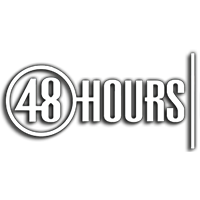The Benefits of Rapid Heroin Detox with WAISMANN METHOD®
Rapid heroin detox is a safe and effective way to break free from heroin dependence quickly and comfortably. Waismann Method is a leading heroin detox protocol that has helped thousands of people overcome their opioid dependence and start a new life.
Waismann Method is a medically supervised procedure that uses FDA-approved medications, such as Naltrexone, to remove opioids from the body and block opioid receptors. This process is completed under sedation, so patients do not experience the pain and discomfort of traditional withdrawal symptoms.
After completing the Waismann Method rapid heroin detox program, patients are transferred to a recovery center for ongoing support and treatment. This helps to ensure that they get the help they need for post-detox recovery.
What is Heroin?

Heroin is a fast-acting opioid that people use recreationally for its euphoric, downer, and numbing effects. The drug is usually smoked, snorted, or injected. Heroin (like morphine) comes from the resin of poppy plants. The euphoric effects (the “high”) from heroin happen within seconds, making it a dangerous drug. Like all opioids, heroin limits the brain’s ability to feel pain. Accelerated Heroin Detox has been a great tool in combating withdrawals, which significantly helps people start their recovery.
Heroin users may initially conceal their use, but signs and symptoms become more prevalent as the addiction progresses. The good news is that there is hope. Medically assisted programs such as rapid heroin detox are available for those suffering from heroin addiction.
The Importance of a Medical Detox
Heroin is a highly addictive drug that impacts your physical and emotional well-being. People addicted to heroin often require withdrawal treatment to overcome their addiction through inpatient medical accelerated heroin detox. Due to its powerful effects, those who suffer from heroin addiction should access inpatient medical heroin detox to come off. Unsupervised withdrawal may have medical or emotional complications that could be life-threatening. The support of specialized medical and mental health professionals during this challenging phase is crucial for the safety and success of a detoxification treatment for heroin addiction.
Archaic forms of heroin treatment involve admission to a drug rehab facility. Unfortunately, these rehab centers have drug counselors who lack the medical education required to identify and treat withdrawal symptoms. Other options are buprenorphine-based drugs, which although much safer than street drugs, it is also addictive. Methadone maintenance has also been at the forefront of treatment and is extraordinarily addictive and one of the most difficult opioid withdrawals.
In our opinion, the first stage of coming off the drug is a successful heroin detox. Without it, one can never achieve full recovery. Heroin detox can trigger extraordinarily uncomfortable and dangerous withdrawal symptoms. As a result, people can face immediate relapse if not properly managed.
Rapid Detox for Opiate Addiction
Rapid detoxification is a procedure that sedates patients while given medications to induce and speed the withdrawal period. This process allows patients to complete detoxification while comfortably sleeping in a private ICU room within an accredited hospital. During detox, the antagonist medication also binds to the opiate receptor sites, eliminating most physical cravings.
Anesthesia detox prevents the patient from going through the unnecessary agony of long and challenging heroin withdrawal symptoms. This type of treatment can provide patients a much higher chance of success in completing opioid detoxification.
Medical heroin detox plays an essential role in helping people get through the withdrawal symptoms safely and successfully. Heroin detox is uncomfortable enough to cause many people to keep on using or give up during withdrawal. Providing patients the chance to sleep through anesthesia-assisted detox helps reduce the risk of relapse while also providing a much more comfortable and safe way of detoxing. Furthermore, medical staff can reduce discomfort while ensuring that patients’ condition is continually monitored.
Rapid Heroin Detox by Waismann Method
Waismann Method rapid accelerated heroin detox involves pushing the opioids off the receptors in the body. Our rapid heroin detox program aims at eliminating heroin from your system and reversing its damaging effects. Therefore, this regulation allows for a steady journey of recovery and a more balanced mental status.
If you are looking for an opioid detoxification treatment program, give us a call. Talk to our professional team so we can understand your health needs and provide you with treatment options. We believe everyone should get the best chance to overcome opioid use disorder, starting with successful detoxification. You have the opportunity to build a brighter future for yourself and your family. Let us help you create a life free from heroin addiction.
Many treatment programs are currently treating heroin addiction with MAT drugs such as buprenorphine. It is essential to know that drugs that contain buprenorphine, like suboxone, are partial long-acting opioids. In other words, although they keep patients from going into a withdrawal syndrome, as with other opiate addiction issues, these drugs cause physical dependency and withdrawal when discontinued.
What is Heroin Rapid Detox?
A rapid heroin detox or medically assisted detoxification is the most effective way to achieve complete detoxification. Medical detox protocols work optimally as an essential part of a multifaced opioid dependency program that includes further emotional support and services.
Naltrexone and Vivitrol may also be added once heroin detoxification is completed. Both of these medications are antagonist drugs that block opioid receptors and significantly reduce cravings. Unlike buprenorphine and methadone, Vivitrol and Naltrexone are not opioids. Consequently, these medications do not cause dependence, addiction, or withdrawal symptoms when discontinued. Rapid accelerated heroin detox has nearly a 100% success rate in achieving complete detoxification.
Heroin Addiction
Heroin is a highly addictive illegal substance. Using it regularly causes tolerance, which leads to physical dependence. As a result, heroin addiction symptoms can vary depending on the user’s genetic makeup, drug use frequency, the amount of the drug used, the level of dependency, and other factors. Addiction treatment includes rapid heroin detox.
Signs and Symptoms of Heroin Addiction and Abuse
These are some of the most common symptoms of heroin addiction:
- Sudden mood swings
- Constricted (tiny) pupils
- Cycles of alertness and sudden nodding off
- Slurred speech
- Disorientation
- Scratching and flushed skin
Addiction Warning Signs
- Needles or syringes
- Burned spoons or aluminum foil
- Displaced shoelaces, ties, or belts (used to tie injection sites)
- Small containers (usually tiny plastic bags) with brown or white residual
- Pipes or soda cans with holes (used to smoke the heroin)
Side Effects of Heroin Abuse
Repeated use of heroin changes the brain’s physical structure, causing severe damage to both the peripheral nervous system and the body’s hormonal functions. Studies have also shown that the damage caused by heroin use often leads to a decrease in the user’s ability to make decisions, cope with stress, and control behavior.
Heroin users are seldom aware that their dependency inflicts harm on their lives and the people around them. They neglect to care for their livelihoods and their bodies — acquiring more heroin becomes far more important than anything or anybody else.
Heroin is typically used intravenously, which can lead to many severe physical consequences. These may include contracting infectious diseases such as HIV or hepatitis, liver disease, seizures, kidney dysfunction, dehydration, unhealthy weight loss, and abscesses.
Long and Short-Term Heroine Use Effects
The National Institute of Drug Abuse (NIDA) clearly states the long-term side effects of heroin use. Furthermore, the behavioral consequences can be as harmful, if not more, than physical ones. To illustrate, here are some of the most observable behaviors:
- Deceptive behavior (primarily lying and hiding)
- Withdrawal from friends and loved ones
- Lack of interest in healthy hobbies or activities
- Decreased performance of responsibilities, including school or job
- Hostile sudden behaviors
- Stealing or unexplained disappearance of items
Furthermore, people who continuously use heroin develop a tolerance for the drug, and if discontinued, they become susceptible to withdrawal syndrome. Symptoms of heroin withdrawal can set in a few hours, and they usually peak between 48 and 72 hours after the last dose.
Are you ready to overcome heroin addiction? For the most successful rapid detox treatment, call us today!
See how our rapid heroin detoxification program combines clinical excellence and a professional, caring environment, so you feel safe and welcome every moment of your stay.1-800-423-2482
Heroin Withdrawal Symptoms
Consequently, the length of time someone abuses heroin, how they use it, and the amount will all be essential factors in how dependent the brain and body are. These factors will also dictate the severity and duration of withdrawal symptoms. Most Common Withdrawal Symptoms Include:
Mild Symptoms
- Nausea
- Tearing
- Chills
- Runny nose
- Muscle spasms in the legs (which cause them to kick)
- Yawning
- Sweating
- Dilated pupils
- Fatigue
Moderate
- Vomiting
- Tremors
- Diarrhea
- Aches and pains in the muscles and joints
- Extreme restlessness
- Abdominal cramps
More Severe:
Should require medical assistance because they can put a person at additional risk for medical complications. Some of the symptoms to watch out for include:
- Hypertension
- Dehydration (continuous vomiting or diarrhea)
- Rapid heart rate
- Extreme depression
- Impaired respiration
After physical symptoms, psychological ones follow, including anxiety, depression, and severe cravings for the drug.
Rapid Heroin Detox FAQs
Conclusion:
Rapid heroin detox has nearly a 100% success rate in achieving complete detoxification. Although the procedure is highly successful, not all patients are candidates for being put under anesthesia.
Individuals should be upfront with the treating physician about their drug use history and disclose any information about other health issues, even if they might seem not important. A comprehensive inpatient physical assessment the day before anesthesia detox can prevent unforeseen medical problems, making rapid detox much safer, more comfortable, and ultimately successful.
Sources:
- Opioid antagonists with minimal sedation for opioid withdrawal
- How Long Does Withdrawal From Heroin Last?
- What can be done for a heroin overdose?
- What is heroin, and how is it used?
- Understanding VIVITROL and counseling for the treatment of opioid dependence
- Naltrexone is not an opioid, is not addictive, and does not cause withdrawal symptoms.








